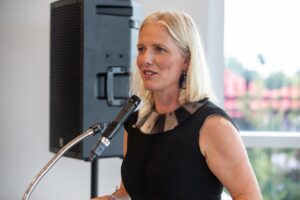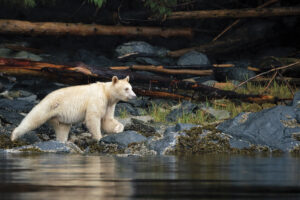
People & Culture
Renaming places: how Canada is reexamining the map
The history behind the Dundas name change and how Canadians are reckoning with place name changes across the country — from streets to provinces
- 4574 words
- 19 minutes
This article is over 5 years old and may contain outdated information.
People & Culture

“My whole 30 years’ work is a result of being Canadian,” says photographer Edward Burtynsky. Given how important water is to Canada, it’s hardly surprising that Burtynsky’s latest project explores the human impact on the resource. The project Water includes a series of photographs, a book and a documentary film, Watermark. Canadian Geographic spoke to Burtynsky before the September premiere of Watermark at the Toronto International Film Festival and the October opening of the accompanying photography exhibition in New Orleans.
I was doing a project on mining in Australia. Unbeknownst to the miners, they were reversing the flow of fresh water that was making its way to the Pacific. They were pumping salt water onto local fields. Losing water resources is probably the most destabilizing and threatening thing to any country’s national security.
The shot of the Kumbh Mela festival in India, where 35 million people were bathing in the Ganges River. I was there with a film crew and all my equipment, and they kept denying me access. Denying, denying, denying everything we wanted to do. It would have been a more powerful image had I been given free rein.
Between Hurricane Katrina and the oil spill in the Gulf of Mexico, if any city has had to withstand some really serious blows as a result of water, hands down it’s New Orleans.
I’ve seen the population grow in an unprecedented way, almost triple to when I was born. The overarching theme is that to provide for this new population, for all these newcomers, we need to expand our capacity. So we’re constantly involved in this growth story. Growth was not actually a human narrative before the industrial revolution. Nobody talked about growth.
A lot of my work is looking at the human industrial system’s incursions into the natural world that have in a way been necessary to fuel this growth. We live on a finite planet, but the prevailing — unsustainable — myth is that growth is an infinite equation, that we can just keep growing.
Light and point of view are key players in conveying size once I’ve got a subject. Oftentimes, I’ll have my subject and my point of view, but the light or even the time of year is sometimes wrong. I’ll come back later to get it.
Part of the narrative I’m trying to describe is that the way we engage with the natural world today, and the way industry and corporations engage in gathering material and reprocessing it for the marketplace, is on a scale that was probably unimaginable 200 years ago.
Losing control of the well was like the classic Frankenstein story. Something’s been invented, but the risk is not understood. All of a sudden a monster is free, running around creating havoc. Science is now trying to put the monster back in the box.
We do it time and time and time again. I don’t know when the lesson’s learned. Recording those histories and making sure those histories remain in consciousness is one hope that we have to stop making the same mistakes.
The environmental movement has largely been marginalized by a much more powerful force, which is the corporation and its ability to go out there and shape ideas through advertising, ideas through lobbying and policy change.
I think that environmental groups have evidence on their side, but they don’t have a lot of the other stuff like clout, organization or the resources to go out there and shape ideas through marketing, through advertising and through media.
It reaches a larger audience than stills, museum exhibitions or art books. That’s still a fairly small, elite and isolated audience. But film opens up ideas in a much broader way. I wanted the audience to experience something through film, then to start to formulate their own ideas about what’s going on. To me, that’s more powerful than photographs in terms of raising consciousness.
Are you passionate about Canadian geography?
You can support Canadian Geographic in 3 ways:

People & Culture
The history behind the Dundas name change and how Canadians are reckoning with place name changes across the country — from streets to provinces

People & Culture
The story of how a critically endangered Indigenous language can be saved

People & Culture
A century after the first woman was elected to the Canadian Parliament, one of the most prominent figures in present-day politics shares her thoughts on how to amplify diverse voices in the Commons

Wildlife
How ‘maas ol, the spirit bear, connects us to the last glacial maximum of the Pacific Northwest